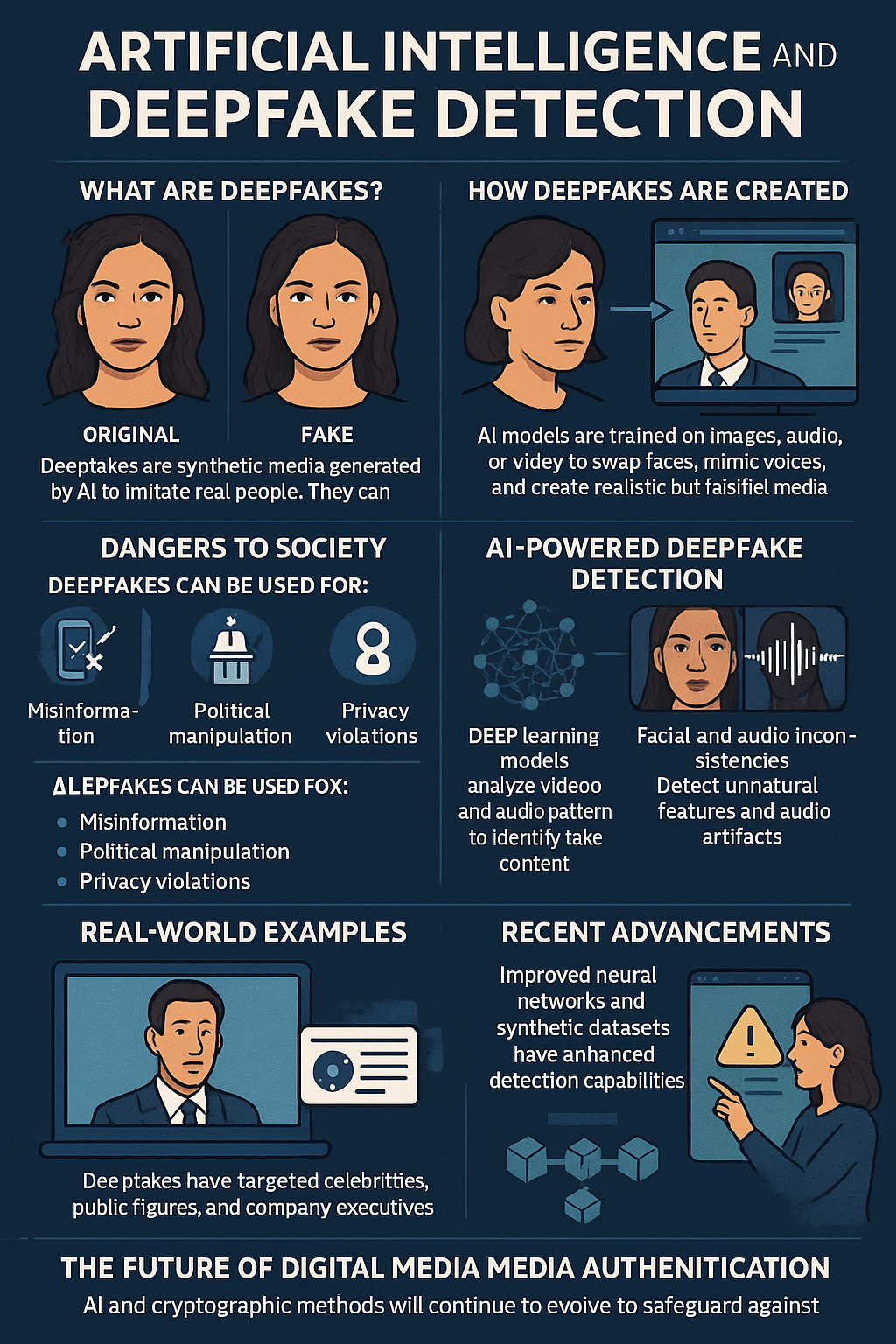In today’s world digital content spreads making it difficult to distinguish between real and fake information. One trend that causes significant concern is the growth of deepfakes — artificial videos or audio clips created with AI. However, AI also serves as the primary tool to combat this issue.
Let’s dive into how AI detects deepfakes and why this matters.
What Are Deepfakes?
Deepfakes are counterfeit videos, images, or voices produced using artificial intelligence. They aim to mimic real people — even making individuals appear to speak or act in ways they never did in reality.
These phony media files are created using a unique AI type called GANs (Generative Adversarial Networks). One AI component generates the fake, while another tries to spot if it’s genuine or not — this process leads to more believable output over time.
Why Deepfakes Worry People
While some deepfakes are created for laughs, many aim to deceive or hurt. Here’s why they’re a big problem:
- Fake news and false information can spread fast.
- People can pretend to be famous figures and politicians.
- Scammers blackmailers, and online bullies can use them.
- They make people doubt digital content and media.
How AI Detects Deepfakes
the technology that creates deepfakes also helps to spot them. Here’s how AI tools and models catch fakes:
1. Examining Eye and Face Movements
AI checks for weird movements in the eyes, lips, or face. For instance, if a person doesn’t blink as they should or if the mouth doesn’t sync with the words, it raises suspicion.
2. Studying Audio
AI tools can examine sound quality, tone, and speech patterns. A voice that sounds machine-like or a bit strange could be fake.
3. Spotting Visual Errors
Deepfakes often have odd lighting fuzzy edges, or unusual shadows. AI has the ability to examine the pixels to identify these small imperfections.
4. Analyzing the Video Frame by Frame
AI can check how a face or body shifts across each video frame. If the movement seems rigid or unnatural, it might be a deepfake.
Common AI Tools Used to Identify Deepfakes
Several tech firms and scientists have created tools that aid in spotting fake media. Here are some examples:
- Microsoft Video Authenticator: Examines videos for indications of editing.
- Sensity AI: Keeps track of deepfake activity on the internet.
- Facebook’s Deepfake Challenge: Motivated developers to build improved detection systems.
Can AI Keep Up with Deepfake Makers?
AI and deepfake creators are in a constant battle. Deepfake makers improve their tools, so AI detectors must evolve. The bright side is that scientists work to stay one step ahead. They combine AI with tools like blockchain verification to check if a video is real.
How You Can Protect Yourself
While AI does its job, you can take action to guard yourself:
- Question viral videos or audio clips — check reliable news sources.
- Watch for odd things, like strange facial expressions or voices that don’t match.
- Try reverse search tools for videos and pictures.
- Don’t share content you can’t verify.
